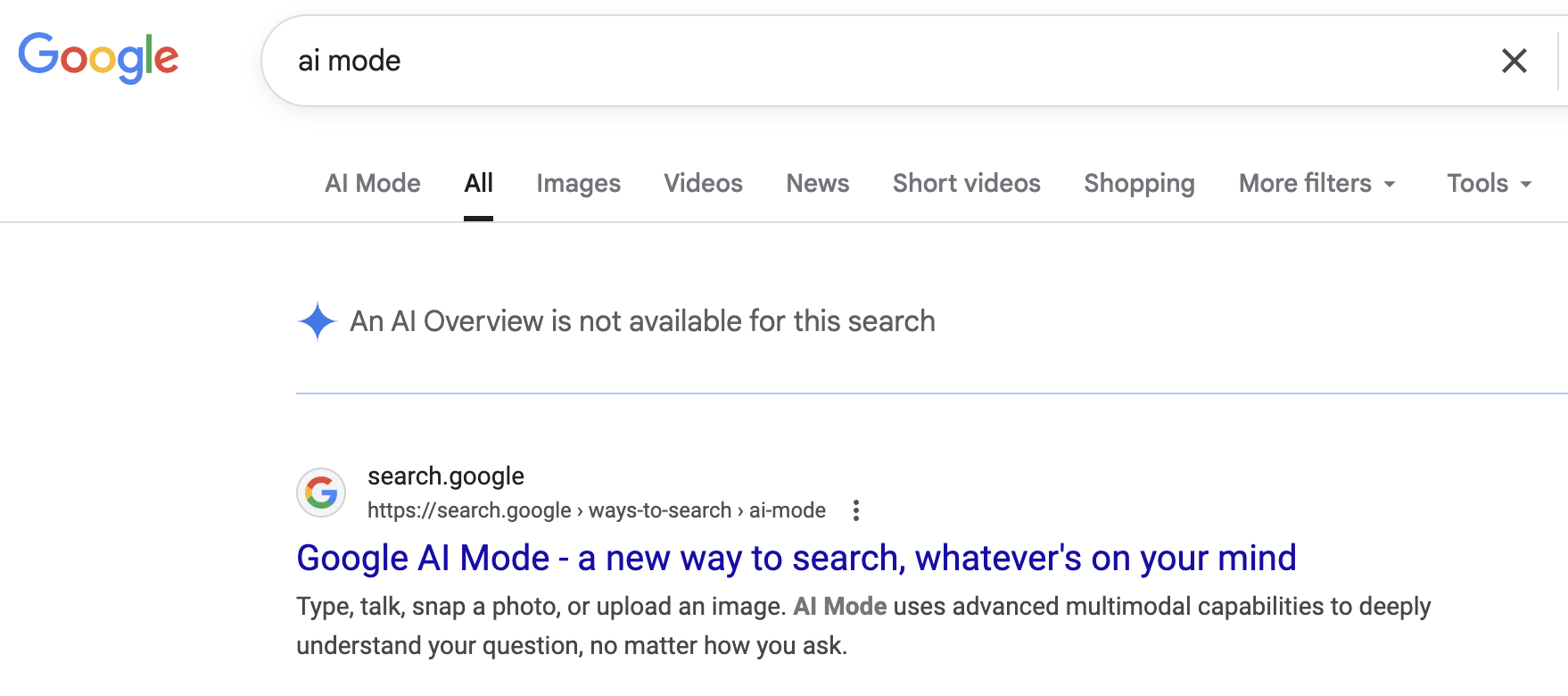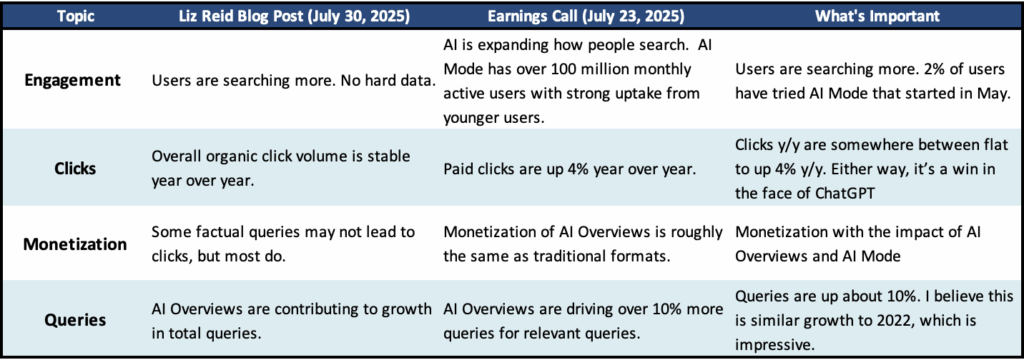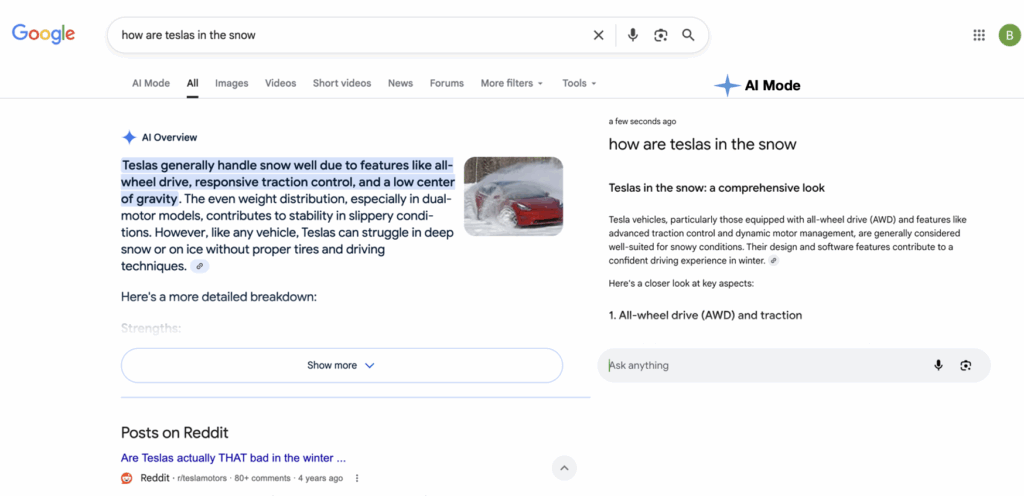Four Surface Approach
As it stands today, I describe the company as offering four surfaces that serve two distinct behaviors.
Search remains information focused and now includes:
- AI Overviews for quick factual synthesis
- AI Mode for conversational, follow-up heavy queries
Gemini is positioned as the personal, proactive assistant for creation and tasks.
Why it matters comes down to focus and clutter. For information and commerce, most users still want the confidence of traditional Search. For more advanced projects, users want a ChatGPT inspired experience that helps them think, draft, code, or act. That said, the issue is that having these four distinct surfaces is confusing. Users don’t always know what to use and when.


